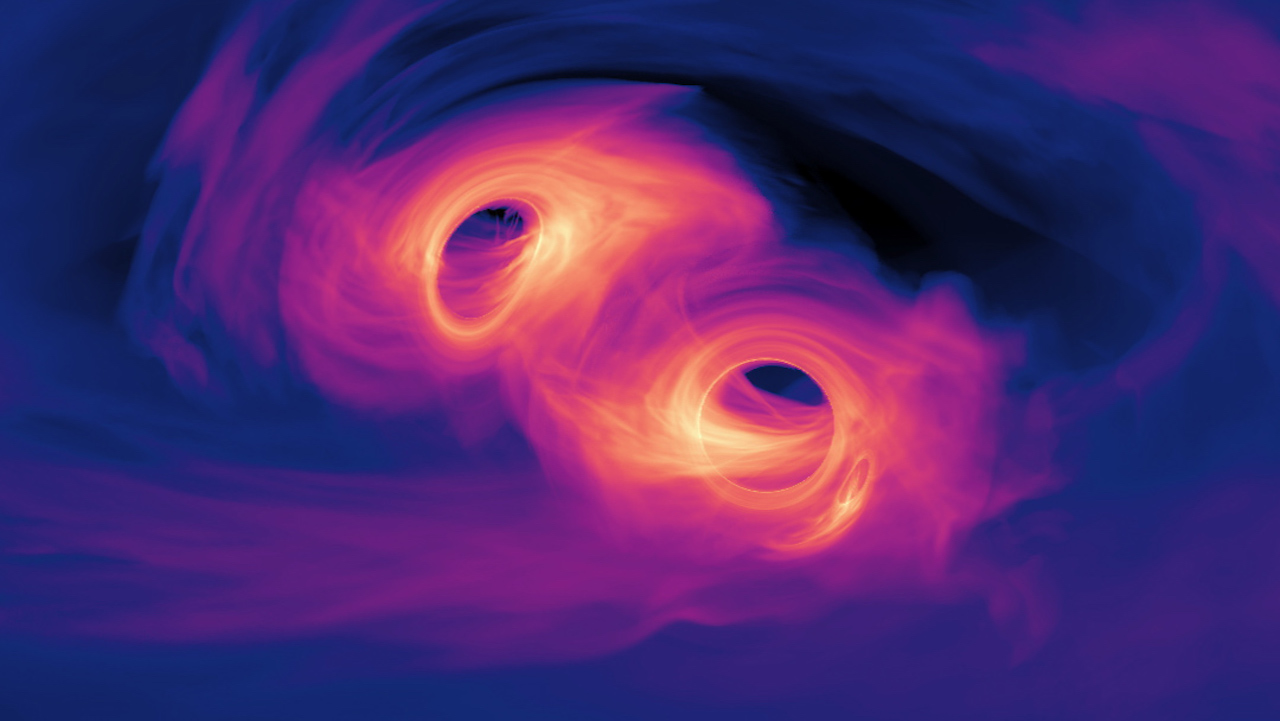Black Holes. That Might Be About to Change
Universe Today | Brian Koberlein | 2023 Jun 19
Gravitational wave astronomy currently can only detect powerful rapid events, such as the mergers of neutron stars or stellar mass black holes. We’ve been very successful in detecting the mergers of stellar mass black holes, but a long-term goal is to detect the mergers of supermassive black holes.
While stellar mass black holes can be dozens of solar masses in size, supermassive black holes can be millions or billions of solar masses. This means the time frame for a supermassive black hole merger is not seconds, but years or decades. Rather than a quick chirp of gravitational waves, we observe with stellar mass mergers, the chirp of a supermassive merger is too slow for observatories such as LIGO to directly observe. Even the planned space-based LISA gravitational wave telescope would not be large enough to see one. The gravitational wavelengths would just be too long.
But a new paper published by the NANOGrav project shows how we might observe the mergers of supermassive black holes. Rather than proposing a giant gravitational wave observatory, NANOGrav has been studying the radio pulses of millisecond pulsars. These pulsars spin so quickly that they emit a pulse of radio light nearly a thousand times a second. Their pulses are so regular that they can be used as cosmic clocks.
For more than a decade, NANOGrav has observed the pulses of 45 millisecond pulsars, looking for small shifts in their timings. The idea is that as long-wavelength gravitational waves pass through space they will shift the pulsars slightly, which would shift the timing of the pulses we observe. By looking at the overall statistical shifts of lots of pulsars, we can detect the large-scale effect of the gravitational waves from merging supermassive black holes. ...
Gravitational waves from supermassive black hole
binaries might be ‘right around the corner’
Northwestern University | 2023 Jun 08
The NANOGrav 12.5-year Data Set: Bayesian Limits on Gravitational
Waves from Individual Supermassive Black Hole Binaries ~ Zaven Arzoumanian et al
- arXiv > astro-ph > arXiv:2301.03608 > 09 Jan 2023 (v1), 06 Jun 2023 (v2)
